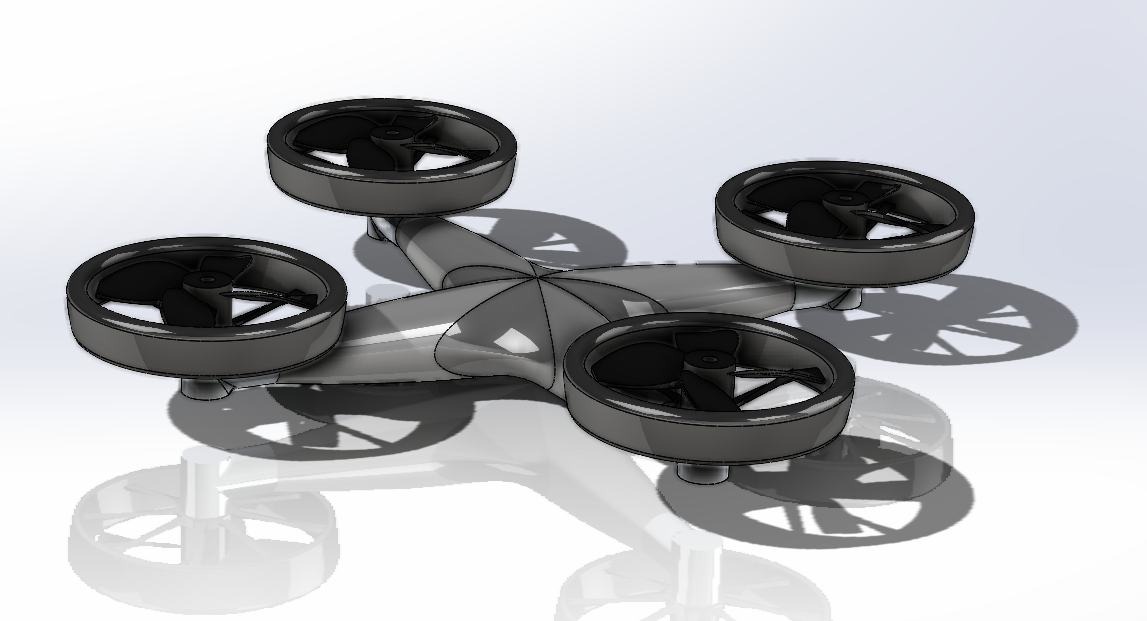Introduction
Quadrotor drones have gained popularity in research and industry due to their versatility and maneuverability. However, their inherently unstable dynamics require precise control strategies to maintain stability and ensure accurate movement. This project focuses on the design, modeling, and simulation of a control system for quadrotor stabilization, covering altitude, roll, pitch, and yaw.
3D Modeling of the quadrotor drone
For system analysis, a quadrotor model was created in SolidWorks. This model allows obtaining key physical parameters such as mass distribution, moments of inertia, and aerodynamic properties, essential for controller design.

Drone Dynamics
Two reference frames are defined:
-
Global Frame (A): Used to describe the position and orientation of the drone.
-
Local Frame (B): Moves with the drone and is used for analyzing forces and torques.
The state of the drone is represented as:
The rotation matrix from the local frame to the global frame is given by:
The translational and rotational equations of motion, derived using Newton-Euler, are:
Where is the total thrust and represents the moments about the drone axes.
PID Controller Design
To ensure stability, a PID controller was designed to regulate altitude and orientation. The PID equation is:
The gain constants were empirically adjusted to minimize overshoot and settling time.
Simulation and Results
The system was simulated in MATLAB/Simulink, evaluating its response under different conditions:
-
Step Response: Assessing stability and response speed.
-
Sinusoidal Signal: Measuring trajectory-following capability.
-
Disturbances: Analyzing system robustness.
The results showed that the PD controller provided the best stability, with short settling times and zero steady-state error.
Conclusions
It was demonstrated that a PD controller is sufficient to stabilize the quadrotor in its main axes. Future work proposes implementing trajectory control strategies and autonomous navigation.